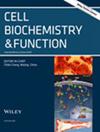Shh Protects the Injured Spinal Cord in Mice by Promoting the Proliferation and Inhibiting the Apoptosis of Nerve Cells via the Gli1–TGF–β1/ERK Axis
Abstract
Spinal cord injury (SCI) is a common neurological trauma that cannot be completely cured with surgical techniques and medications. In this study, we established a mouse SCI model and used an adeno-associated virus (AAV) to achieve the high expression of sonic hedgehog (Shh) at the injury site to further investigate the therapeutic effect and mechanism of Shh on SCI. The results of the present study show that Shh may promote motor function recovery. The present findings demonstrate the protective effect of Shh overexpression in SCI by regulating the proliferation and apoptosis of nerve cells at the site of SCI. Shh promotes the proliferation of early microglia, inhibits the proliferation of early astrocytes, and promotes the formation of neurons at the site of injury. In addition, Shh may inhibit apoptosis at the SCI site. The mechanism by which Shh regulates nerve cells at the site of SCI may involve glioma-associated oncogene 1 (Gli1). The present research indicates that Gli1 regulates the transforming growth factor-β (TGF-β) signaling pathway, inhibiting the classic TGF-β1/Smad signaling pathway and activating the TGF-β1/extracellular regulated protein kinase (ERK) signaling pathway. Collectively, these findings suggest that Shh is a regulatory molecule involved in nerve cell proliferation and apoptosis. High Shh expression can accelerate motor function recovery after SCI, indicating that it may be a promising therapeutic approach for SCI.



 求助内容:
求助内容: 应助结果提醒方式:
应助结果提醒方式:


